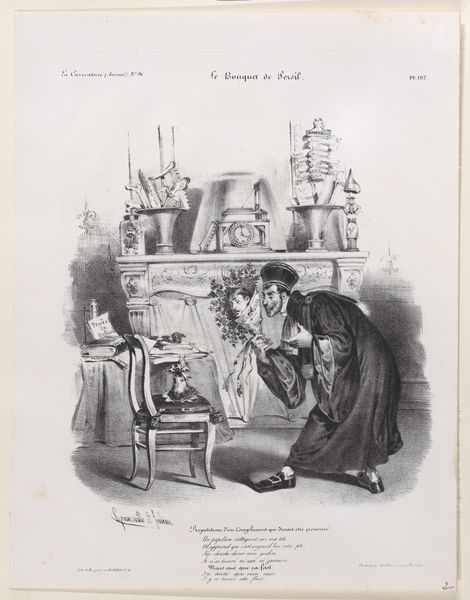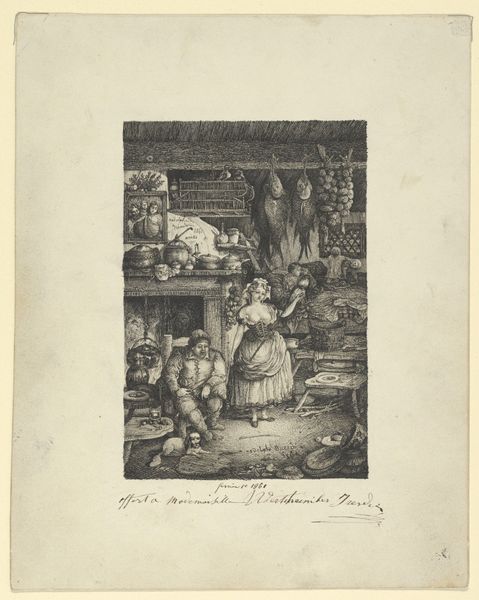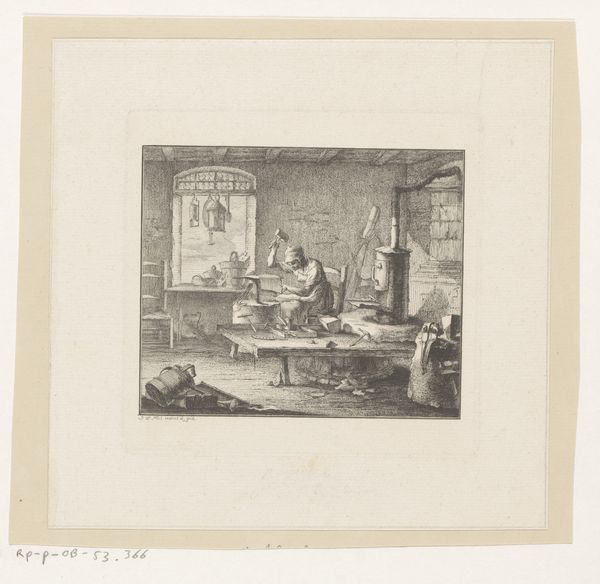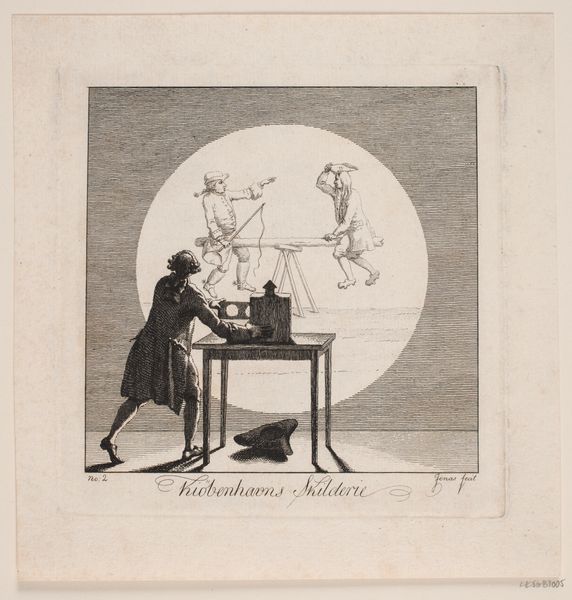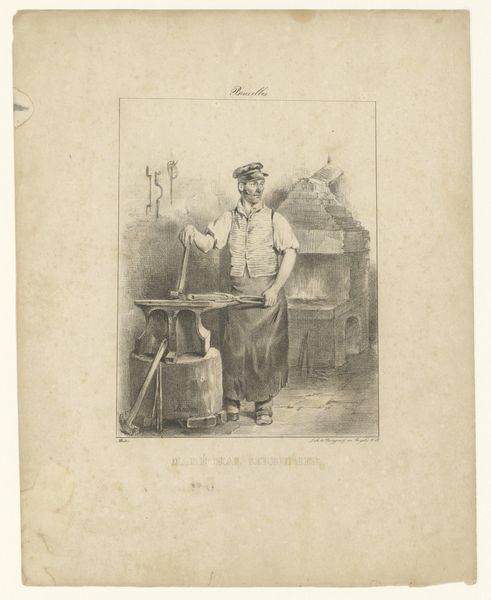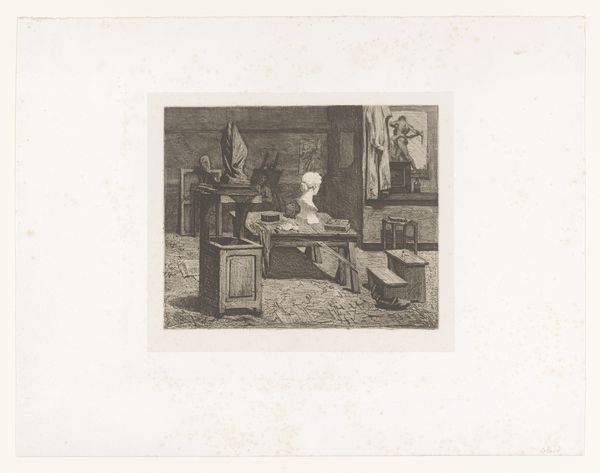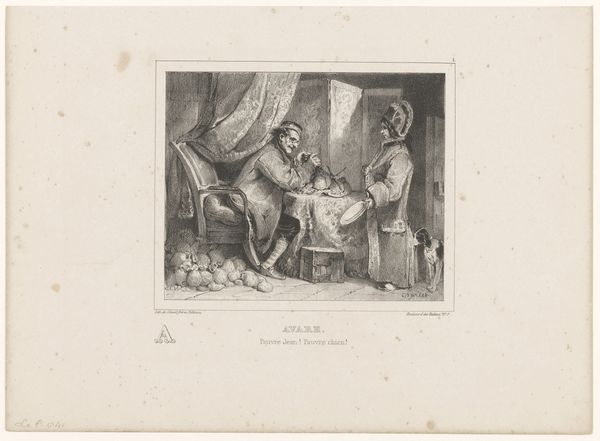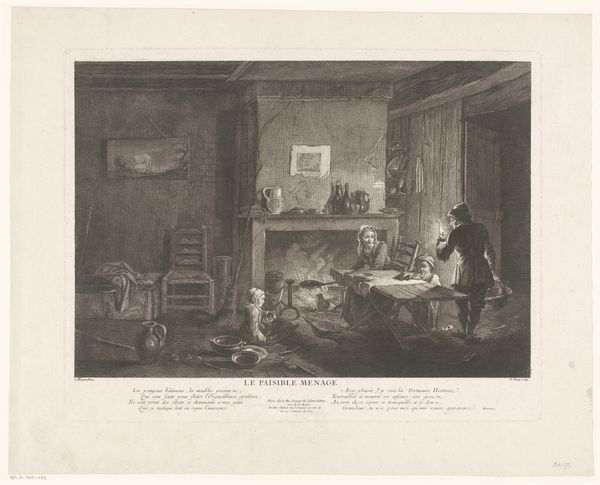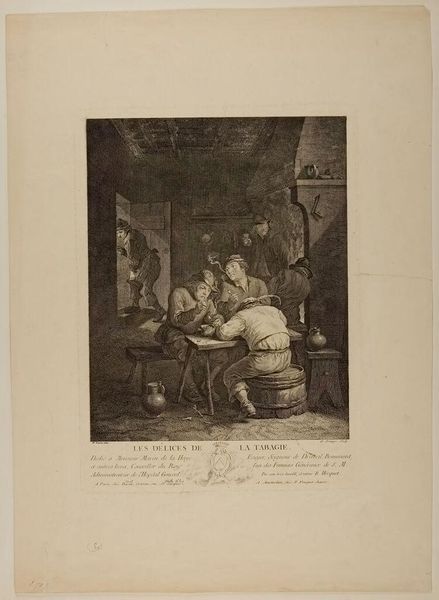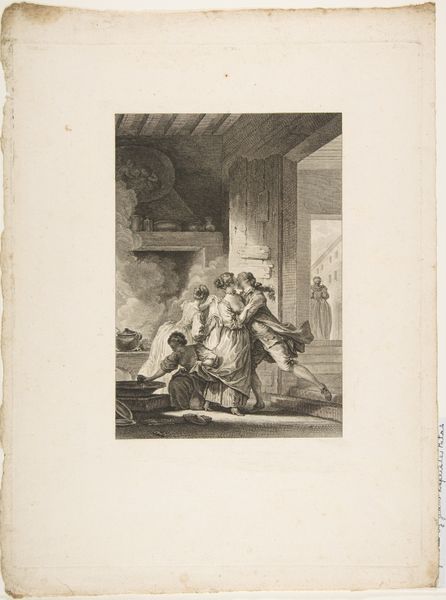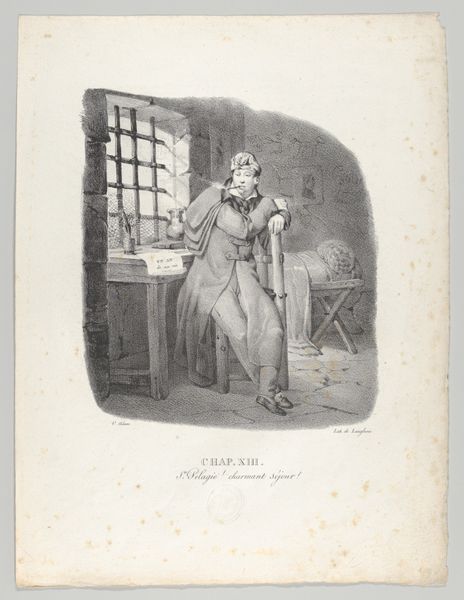
drawing, print, engraving
#
portrait
#
drawing
#
table
# print
#
figuration
#
cupid
#
romanticism
#
men
#
line
#
genre-painting
#
history-painting
#
engraving
Dimensions: Sheet: 11 5/8 × 16 7/8 in. (29.6 × 42.8 cm) Image: 7 3/8 × 9 7/16 in. (18.8 × 24 cm)
Copyright: Public Domain
Editor: So, this is Horace Vernet's "The Young Widow," created sometime between 1813 and 1826. It’s a print, an engraving really, and the subject matter has quite an emotional gravity. The overall composition is quite stark; a young woman surrounded by objects alluding to love and memory. How do you read the symbolic language here? Curator: Immediately, the floating cherubs draw my eye. How are they positioned, hovering over the young woman? Their placement creates a constellation of grief and longing. What might they represent culturally? Do they suggest heavenly intervention, or perhaps her own internal, fantasized memories of the marriage? Editor: I think they’re memories, probably idealized ones. They seem less...divine and more dreamlike. Like the opposite of reality. Curator: Exactly! Vernet understood the power of symbolic positioning. Now, consider the objects around her. What about the statue of Cupid? How does its static form contrast with the ephemeral cherubs? Editor: Well, Cupid feels almost like a mocking presence, doesn’t it? He's a reminder of the love she’s lost, made all the more poignant by being rendered in cold stone, unlike those emotional cherubs. It's quite sad. Curator: The composition makes the viewer wonder. Why depict both an ideal image, the cupids, with such concrete and symbolic reminders of loss? This dissonance between permanence and transience creates a deeper, perhaps more truthful, emotional complexity. Do you agree? Editor: That’s a good point. The picture isn’t simply mournful. It also portrays that interior tension, the conflicting desires to both remember and move on. I learned a lot about seeing art, which is amazing. Thanks for clarifying those symbols!
Comments
No comments
Be the first to comment and join the conversation on the ultimate creative platform.
